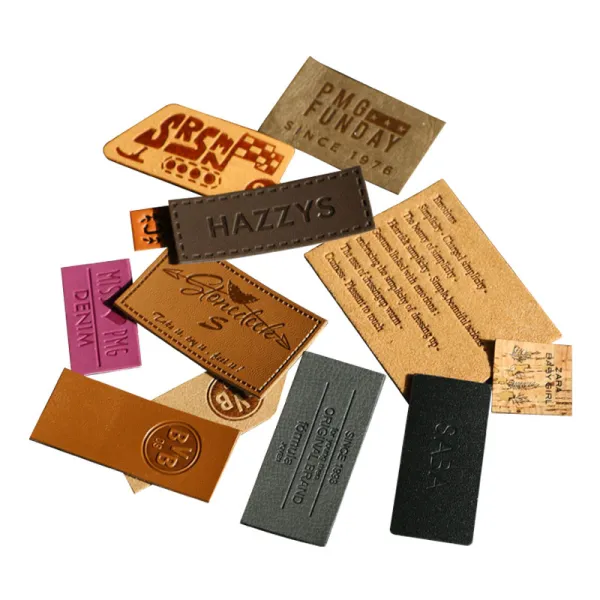Leather labels are small yet significant details found on various fashion and accessory items. Often overlooked, these labels serve a purpose beyond mere branding—they convey important information, showcase craftsmanship, and contribute to the overall aesthetic appeal of the product. In this article, we will explore the significance of leather labels and shed light on their various roles in the world of fashion and beyond.

Leather clothing labels play a crucial role in establishing and promoting brand identity. They serve as a visual representation of a brand's logo, name, or unique design, helping consumers recognize and associate a particular product with a specific brand. Consistency in the design and placement of leather labels across different products helps to create a cohesive brand image, fostering brand recognition and recall among consumers.
A well-crafted leather label signifies attention to detail and quality craftsmanship. Brands that take pride in the quality of their products often showcase their name or logo on a leather label as a mark of authenticity and assurance. By attaching a leather label to their products, brands communicate to consumers that they have met specific quality standards and stand behind the craftsmanship of their creations.
Leather labels can provide valuable information about the product itself. They may include details such as the composition of the leather, care instructions, size, origin, or even limited edition numbers. This information helps consumers make informed purchasing decisions, understand the product's characteristics, and ensure proper care and maintenance. Leather labels for clothing serve as a convenient reference point for consumers seeking essential product information.
Leather labels offer brands an opportunity to differentiate their products in a crowded marketplace. By designing unique and custom-made labels, brands can create a distinct identity and leave a lasting impression on consumers. Leather labels can be personalized with various elements such as embossing, engraving, stitching, or adding unique colors and finishes. This customization allows brands to showcase their creativity and uniqueness while standing out from competitors.
Leather labels have the potential to create an emotional connection between consumers and brands. As consumers interact with products, the tactile experience of touching and feeling a leather label can evoke a sense of luxury, craftsmanship, and exclusivity. These subtle sensory cues contribute to the overall perceived value of the product and enhance the consumer's emotional connection to the brand.
Leather labels can also convey a brand's commitment to sustainability and ethical sourcing. Labels that mention the use of eco-friendly or recycled leather, or certifications such as Fair Trade or animal welfare standards, provide transparency and allow consumers to align their values with their purchasing decisions. Leather labels can act as a symbol of responsible production practices, appealing to conscientious consumers who prioritize sustainability. click here
Leather labels serve multiple purposes beyond branding in the world of fashion and accessories. They are a visual representation of brand identity, assure consumers of quality craftsmanship, provide essential product information, and create an emotional connection. Moreover, leather labels offer a means of differentiation, personalization, and conveying sustainability values. By understanding the significance of leather labels, both brands and consumers can appreciate the attention to detail and craftsmanship that goes into these seemingly small but impactful elements.
Previous: The Importance of Leather Labels: A Guide for Brands and Consumers
Next: None.
Copyright:@2020-2021
Comments Please sign in or sign up to post.
0
0 of 500 characters used